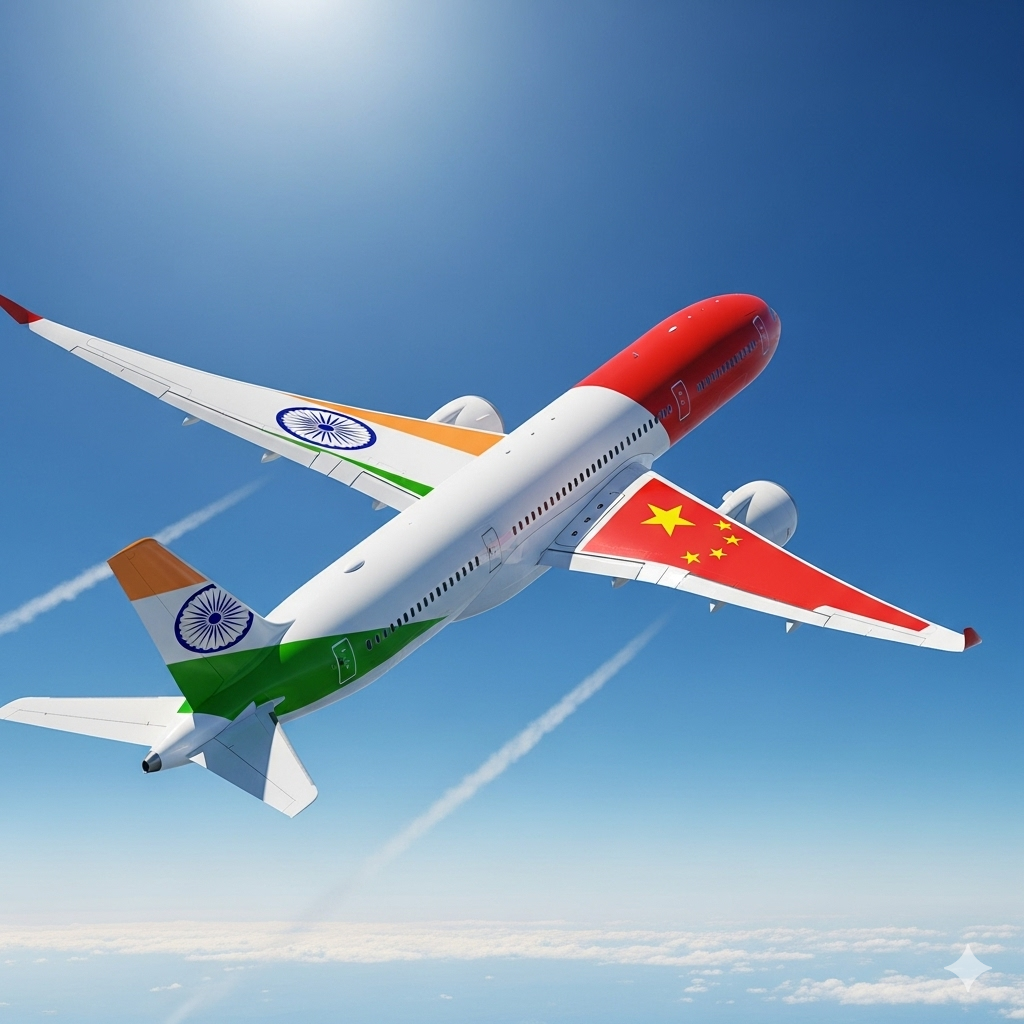After a five-year hiatus, India and China are set to resume direct commercial flights, a significant move that signals a thaw in their bilateral relations. The long-awaited decision, announced during Prime Minister Narendra Modi’s meeting with Chinese President Xi Jinping on the sidelines of the Shanghai Cooperation Organisation (SCO) summit in Tianjin, brings an end to a suspension that began with the COVID-19 pandemic and was prolonged by simmering border tensions.
A Diplomatic Thaw
The suspension of direct flights, which began in early 2020, was initially a response to the pandemic. However, the travel freeze became a de facto diplomatic tool following the deadly Galwan Valley clashes in June 2020, which plunged relations to their lowest point in decades. For years, students, business travelers, and families were forced to take lengthy and costly detours through hubs like Hong Kong, Singapore, or Bangkok.
The recent decision to restart flights is part of a broader effort by both nations to normalize ties. It follows other recent goodwill gestures, including the resumption of the Kailash Mansarovar Yatra pilgrimage and the reissuing of tourist visas for Chinese nationals. The move underscores a pragmatic approach from both sides to strengthen economic and people-to-people connections, even as some border issues remain unresolved.
The Impact on Travelers and the Economy
The resumption of direct flights is expected to have a profound impact on multiple sectors. For the tens of thousands of Indian students studying in Chinese universities, the new routes will make travel significantly easier and more affordable. Similarly, it will provide a major boost to business and trade, which has continued to grow despite the lack of direct air connectivity. China is one of India’s largest trading partners, and the renewed air links will streamline logistics and facilitate greater commercial activity.
Airlines on both sides are already preparing to act. Indian carriers like IndiGo and Air India, and Chinese airlines such as Air China, China Eastern, and China Southern, are expected to revive their pre-pandemic routes connecting major cities like Delhi, Mumbai, Shanghai, and Beijing. While the exact timeline is still being finalized, operations are anticipated to align with the winter 2025 schedule, pending regulatory approvals.
Looking Ahead
While the resumption of flights is a clear sign of improving ties, it is a cautious step toward full normalization. Both governments have emphasized that a stable and amicable relationship is in the best interest of their combined 2.8 billion people. This development suggests a shift from a period of confrontation to one of cautious cooperation, where both nations are prioritizing economic stability and strategic autonomy amid a turbulent global landscape. The return of direct flights is a symbolic but crucial step in this process, shortening physical distances and, hopefully, bridging a long-standing diplomatic divide.
Conclusion
The resumption of direct flights between India and China is more than just an aviation announcement; it is a powerful political statement. It signifies a collective commitment from two of the world’s largest economies to move past recent tensions and focus on mutual benefits. The restored air links will not only ease the burden on travelers and businesses but also serve as a foundational element for rebuilding trust and fostering greater understanding between the two nations. This development is a pragmatic step forward in a complex relationship, highlighting the importance of connectivity in an increasingly interconnected world.
Disclaimer
The information provided in this article is for general informational purposes only and is based on publicly available news reports as of the date of publication. While every effort has been made to ensure accuracy, the political and operational landscape surrounding international travel can change rapidly. Readers are advised to verify details with official government and airline sources before making any travel plans.
Affiliate Disclosure
This article does not contain any affiliate links. We do not receive any commission or compensation for any products, services, or links mentioned within the content.







